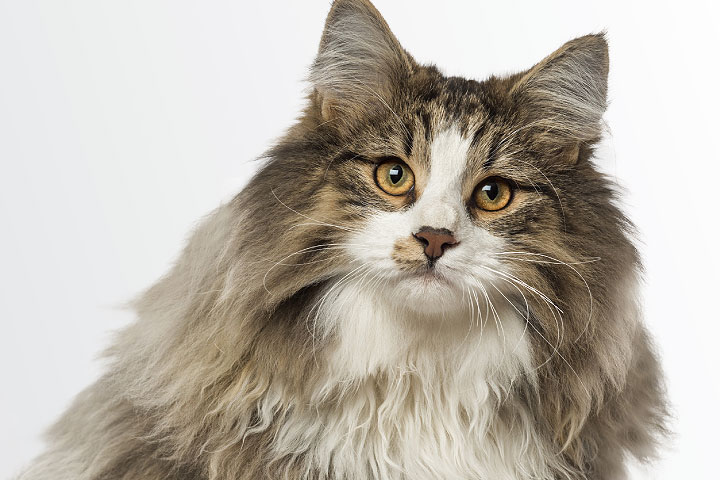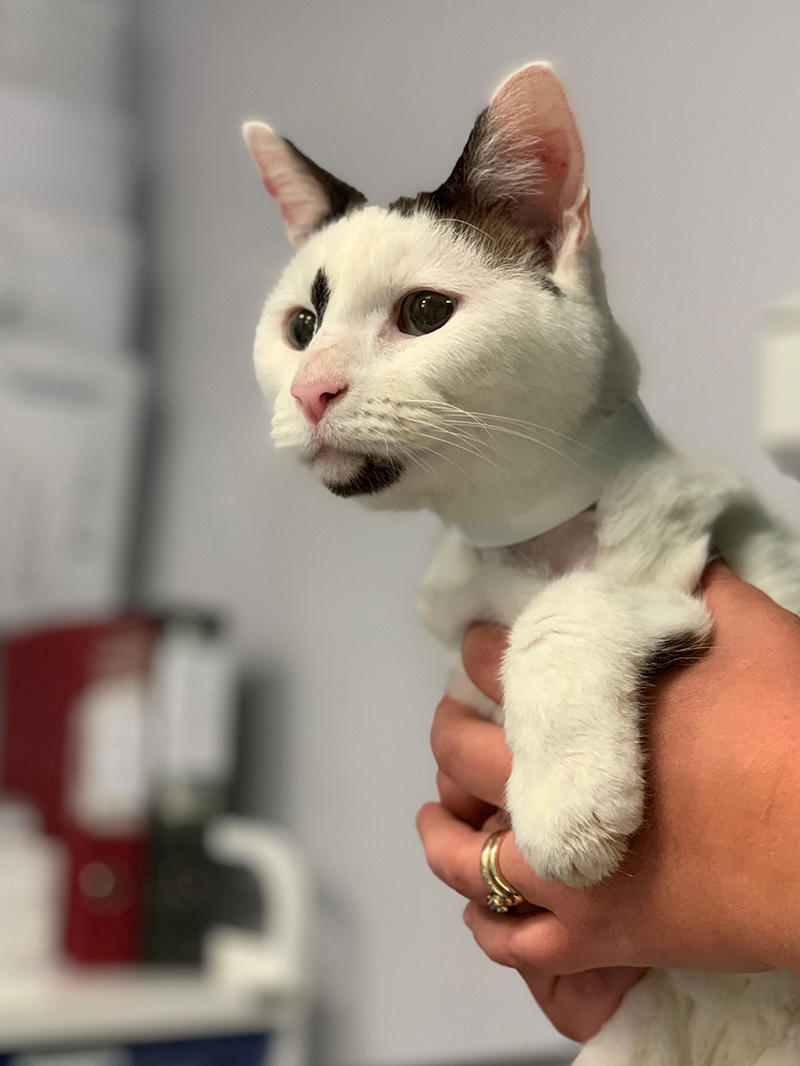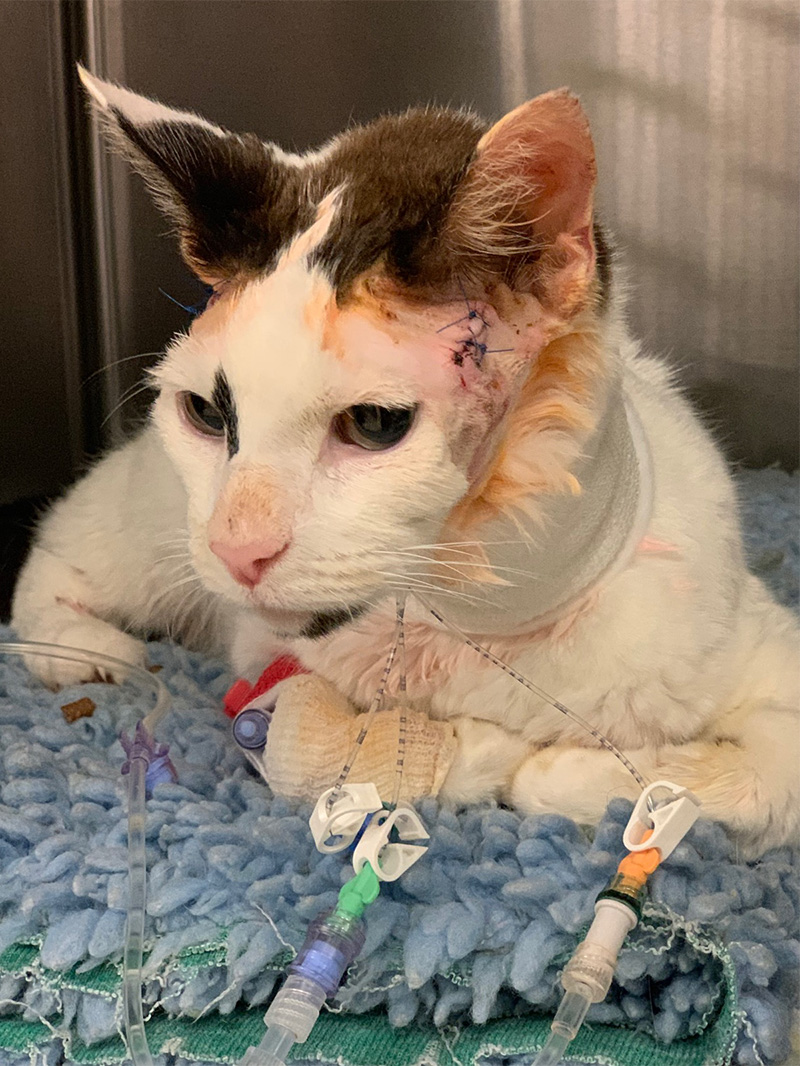acromegaly in cats uk
The disease is therefore likely currently underdiagnosed. Acromegaly in cats.

The Management Of Feline Hypersomatotropism Hs Acromegaly
Chronic overgrowth of connective tissue bone and viscera.

. Acromegaly is an endocrine disease consisting of hypersecretion of growth hormone GH. Neissen states Acromegaly one of the endocrinopathies in the. Serum IGF-1 measurement is the most commonly used diagnostic test for feline acromegaly and is readily available in the United States.
An Acro Cat is usually suffering from significant pain as a result of the uncontrolled growth of bone and tissue you need to talk to your vet about appropriate analgesics to help. Acromegaly in cats causes multiple complications. Feline acromegaly is most commonly caused by a functional pituitary tumor.
Acromegaly In Cats Uk Acromegaly is a disease that progresses slowly and symptoms will take some time to start showing. These often include unusual growths in the cats face abdominal enlargement and cardiomyopathy or heart disease. In dogs it is usually related to an increase in se.
The disease has been known in humans for at least 100 years and has been identified in cats starting in the 1980s. Acromegaly may be suspected in a cat who is persistently hyperglycemic despite daily insulin injections especially if it is accompanied by other symptoms. Prevalence of acromegaly amongst diabetic cats in North America and the UK was found to be around 1 in 4 diabetic cats seen in primary practice.
Acromegaly is the clinical syndrome which results from this with the classic broad facial features prognathia inferior snoring and stertor due to excess tissue growth in the airways myocardial thickening and large paws. Acromegaly is an endocrine disease that leads to elevated production and secretion of growth hormone GH. The estimated prevalence of acromegaly in cats in the uk is between 1 in 800 to 1 in 1000.
Acromegaly is characterized by chronic excessive growth hormone GH secretion by the pituitary gland. Stjin Neissen of the RVC Feline Diabetes Clinic is leading the charge when it comes to clinical research on the prevalence of FD and Acromegaly in cats. Acromegaly is a relatively rare hormonal condition.
However cats of any age or sex can develop acromegaly. Acro meaning extremity and megale meaning great. Its a rare disease but unfortunately it can become quite serious.
Growth of the extremities skull and muscles occur in some cats. It can occur in adult and aged cats and is usually associated with neoplasms such as functional pituitary macroadenoma of somatotropic cells. Cardiomegaly and azotemia develop late in the disease.
In cats it is due to GH-secreting tumors of the anterior pituitary. Definitive diagnosis can be difficult because of the gradual disease onset subtle clinical signs unavailability of relevant laboratory tests and client financial. Monday May 2 2016.
Feline Acromegaly Acromegaly In Cats The Veterinary Nurse Acromegaly In Cats The Veterinary Nurse Woman Begs People To Stop Blaming Her For. It is more common in cats than dogs. Acromegaly is caused by excess secretion of growth hormone GH in adult animals.
Nine cats were enrolled and eight completed the study. One study has shown that one in three diabetic cats in North America suffers from acromegaly induced diabetes¹. Home acromegaly cats in uk.
Unlike growth hormone IGF-1 concentrations are less likely to fluctuate over the course of the day since most IGF-1 is protein-bound giving it a longer half-life in the body. Acromegaly was thought to be a rare condition but a recent UK study of diabetic cats with poor to adequate glycemic control showed that nearly a third of them showed signs of acromegaly. Acromegaly is most commonly seen in older 10 years old neutered male cats that have insulin-resistant diabetes mellitus.
Its also probably underdiagnosed which means your vet may not think to look for it so if youve been told that your cats diabetes is particularly. The prevalence amongst non-diabetic cats is currently unknown although these cats would be expected to become diabetic in the long-run. Acromegaly In Cats Uk Acromegaly is a disease that progresses slowly and symptoms will take some time to start showing.
Another that one in four diabetic cats in the UK is suffering from the same². Hypophysectomy for acromegaly in cats. Hypersomatotropism is the preferred term for this disease as GH excess is often present for a long time before clinical acromegalic features are noted.
Treat the pain. Acromegaly in cats uk. In the following article well tell you more about acromegaly in cats.
Acromegaly or hypersomatotropism is a disease that derives its name from two Greek words. Acromegaly is the term used in human medicine to describe a condition resulting from chronic excessive growth hormone GH secretion. Most cats see their diabetes cured also with a return to normal numbers and insulin no longer needed.
Acromegaly in cats uk Wednesday March 2 2022 Edit. Affected cats can develop gradual changes in their appearance but because the disease develops over a long period of time owners may not notice any problems. Acromegaly is an endocrine disease caused by a tumour in.
Recent clinical studies at the RVC in the UK have brought to light the fact that Acromegaly is far more common than previously thought. The term hypersomatotropism HST rather than acromegaly may be appropriate when describing the condition resulting from chronic excessive GH secretion in. The same Tight Regulation protocol used on Diabetic Cat International for non acromegalic works very well for cats with acromegaly and will help you control your cats BGs.
The origin of this alteration in cats is the presence of a tumor in the pituitary gland. Signs related to diabetes mellitus are typically the first clinical signs noticed. Sometimes owners will.
Acromegaly should be considered as a possible cause of difficult to regulate and high dose diabetic cats. Acromegaly is most commonly seen in older 10 years old neutered male cats that have insulin-resistant diabetes mellitus. Common symptoms associated with insulin resistance include weight loss despite a good appetite and increased thirst and urination.
So as many as 1 in 3 hard-to-control diabetic cats may have acromegaly. Acromegaly due to excessive hormone production in the brain is more common in cats than dogs.

Acromegaly In Cats The Veterinary Nurse

Update On Feline Acromegaly Niessen 2013 In Practice Wiley Online Library

Acromegaly In Cats The Veterinary Nurse

Pioneering Hypophysectomy Treatment Reaches 100 Case Milestone

Pdf Acromegaly In A Non Diabetic Cat

Update On Feline Acromegaly Niessen 2013 In Practice Wiley Online Library

Acromegaly In Cats The Veterinary Nurse

Acromegaly In A Non Diabetic Cat

Acromegaly In Cats The Veterinary Nurse

Acromegaly In Cats The Veterinary Nurse

Pioneering Hypophysectomy Treatment Reaches 100 Case Milestone

Acromegaly In Cats The Veterinary Nurse

Woman Begs People To Stop Blaming Her For Her Fat Cat S Massive Size Metro News
